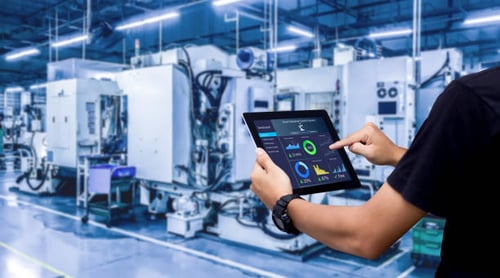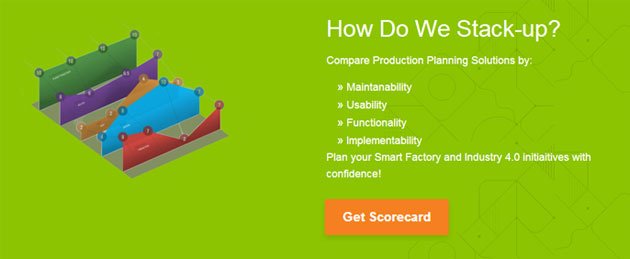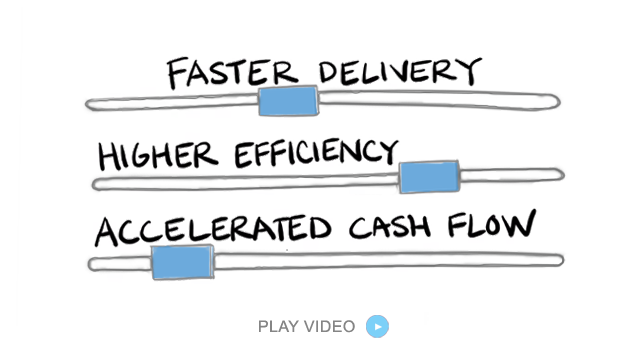Sustainability in Sync: How APS Integration Powers Clean Manufacturing Schedules
Clean technology—once a visionary concept—has evolved into a core pillar of modern industrial manufacturing. As the world shifts toward greener practices and reduced environmental impact, production schedulers now play a crucial role in aligning operational efficiency with sustainability goals. These professionals must balance throughput, resource constraints, and real-time responsiveness—all while minimizing waste and emissions.
For production schedulers in industrial manufacturing, clean technology isn’t just about cleaner machines or renewable energy; it’s also about intelligent, integrated planning systems that optimize resource use and reduce the environmental footprint of every decision. This is where Advanced Planning and Scheduling (APS) platforms like PlanetTogether, especially when integrated with ERP systems like SAP, Oracle, Microsoft, Kinaxis, or Aveva, become indispensable.
This blog explores how production schedulers can harness clean technology and integrated planning tools to drive operational sustainability without compromising productivity.

The Role of Clean Technology in Industrial Manufacturing
Clean technology (cleantech) refers to innovations that reduce negative environmental impacts through energy efficiency, resource optimization, and emissions reduction. In industrial manufacturing, cleantech manifests in various forms:
Energy-efficient machinery and electrification of production lines
Digital twin modeling for predictive maintenance
Waste reduction technologies through lean manufacturing principles
Smart grid integration for optimal energy usage
Cleaner production inputs and recycling of by-products
While these technologies promise significant sustainability gains, coordinating their use effectively across facilities is complex. That’s where clean scheduling strategies come into play.
Why Production Scheduling Is Central to Clean Tech Success
Production scheduling often determines:
When and how long machines run
Which resources (energy, materials, people) are used
How much waste is generated due to idle time, changeovers, or poor sequencing
An inefficient schedule can lead to overproduction, increased energy consumption during peak hours, and higher carbon emissions. A smart schedule, on the other hand, can drastically reduce resource waste and energy use—even with the same inputs.
This is where PlanetTogether APS, integrated with your ERP platform, steps in to ensure sustainability is built into the scheduling fabric.

Leveraging APS + ERP Integration for Sustainable Scheduling
Real-Time Data Synchronization
By integrating PlanetTogether with ERP systems such as SAP or Oracle, production schedulers can pull in real-time data on:
Inventory levels of sustainable or recycled materials
Energy costs and usage trends
Machine performance and maintenance schedules
Labor availability and skill mapping
This live data enables schedules to be dynamically optimized to reduce waste and energy consumption.
Eco-Efficient Constraint-Based Scheduling
PlanetTogether’s constraint-based engine ensures that your production plan respects not only throughput and delivery deadlines but also:
Machine energy profiles (e.g., prioritizing low-energy machines for certain tasks)
Batch sizes that minimize material loss
Optimal changeover sequences to reduce water and chemical use
When connected to systems like Microsoft Dynamics or Kinaxis, the scheduler gains full visibility across the supply and production chain, ensuring the greenest options are chosen.
Load Leveling to Reduce Peak Energy Use
High energy use during peak hours leads to higher utility bills and larger carbon footprints. Using integrated planning tools, schedulers can:
Shift energy-intensive operations to off-peak hours
Combine smaller jobs into a single run to avoid frequent startups and shutdowns
Use predictive models to align production with solar or wind energy availability
Through advanced integrations with platforms like Aveva, which support energy management modules, PlanetTogether enhances decision-making based on sustainability metrics.
Digital Twin and Scenario Planning for Emission Reduction
Clean technology strategies often require major changes—new inputs, new machines, or even new workflows. Through PlanetTogether’s simulation features, production schedulers can:
Run “what-if” scenarios that compare traditional vs. sustainable workflows
Evaluate CO₂ impact per schedule
Test the effects of introducing energy-efficient machines without risking actual production
When integrated with a robust ERP system like SAP or Microsoft, the digital twin becomes even more powerful, leveraging historical and real-time performance data for predictive accuracy.
Key Metrics Production Schedulers Can Use to Track Clean Technology Success
To align scheduling strategies with sustainability goals, schedulers should monitor:
| Metric | Description |
|---|---|
| Energy per Unit Output | How much energy is consumed per item produced |
| Carbon Intensity of Production | CO₂ emissions per job or shift |
| Waste-to-Product Ratio | Material waste as a percentage of finished goods |
| Changeover Frequency | More changeovers = more waste and energy |
| Idle Machine Time | Tracks unproductive energy consumption |
All these metrics can be visualized and optimized through dashboards within PlanetTogether when it’s integrated into ERP systems like SAP or Kinaxis.
As clean technology becomes a mandate rather than an option, production schedulers in industrial manufacturing are uniquely positioned to make a difference. Efficient scheduling is no longer just about meeting delivery dates—it’s about reducing emissions, optimizing energy, and contributing to a more sustainable future.
Tools like PlanetTogether, when integrated with leading ERP platforms like SAP, Oracle, Microsoft, Kinaxis, or Aveva, empower schedulers to make smarter, cleaner decisions every day. By aligning production efficiency with environmental responsibility, production schedulers become not just operators—but sustainability champions.
Are you ready to take your manufacturing operations to the next level? Contact us today to learn more about how PlanetTogether can help you achieve your goals and drive success in your industry.
Topics: Industrial Manufacturing, PlanetTogether Software, Real-Time Data Synchronization, Integrating PlanetTogether, Digital Twin Technology, Eco-Efficient Constraint-Based Scheduling, Load Leveling to Reduce Peak Energy Use, Scenario Planning for Emission Reduction





















LEAVE A COMMENT